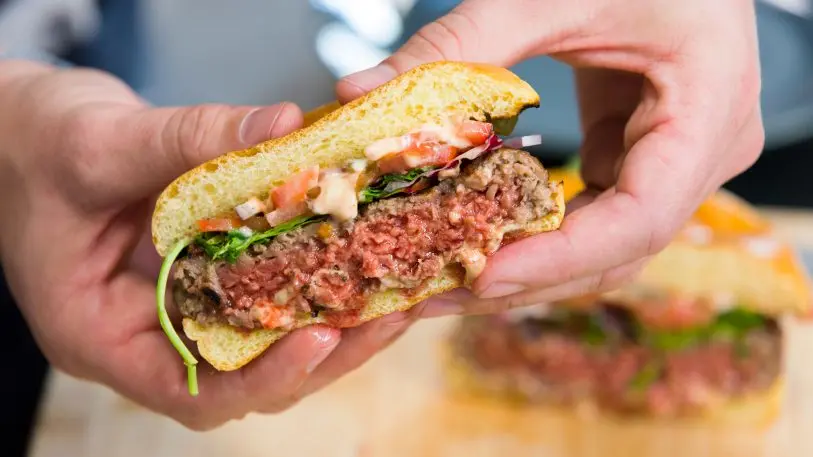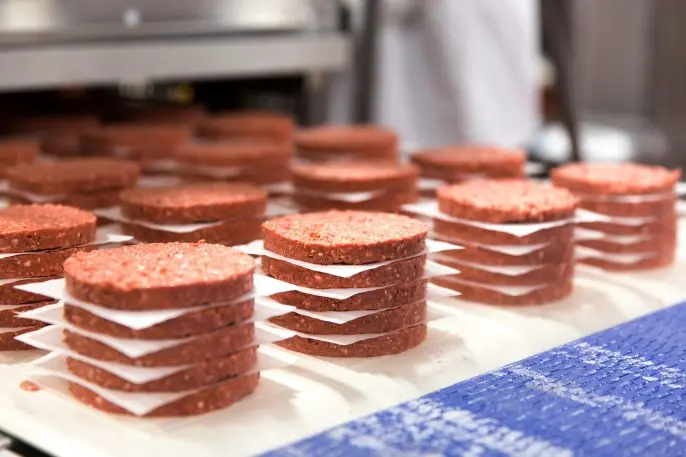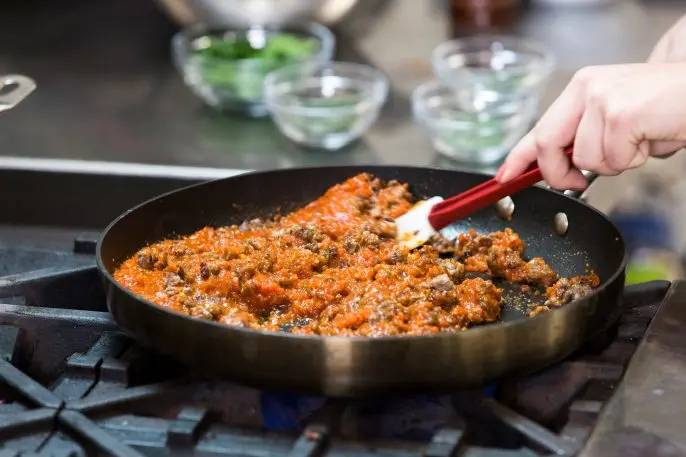“If you had lied to me and told me this was store-bought ground beef, I would have believed you.” So says my friend John as we stand in his kitchen, experimenting with the newly revamped Impossible Burger, which will begin to show up in some restaurants this week. Later this year, the plant-based burger will also be available in grocery stores for the first time.
As a longtime vegetarian, I’ve recruited John–who is serious enough about his meat that he and a group of friends buy a side of grass-fed, grass-finished beef each year from a ranch in Wyoming–to try cooking the new ground “meat.” In taste tests, Impossible says, consumers ranked the new recipe as highly as conventional ground beef; they also liked it nearly three times more than the original Impossible Burger. (Tasters did not know that they were eating plant-based meat.)

Though the original product was successful, Impossible wanted to keep experimenting “because we can,” he says. “Unlike the cow, which will never get better and better, we wanted to leverage all the technology we have so that chefs and consumers everywhere would have a product that is as delicious or maybe even a better choice than picking a burger from a cow.”

The new version, the first to be released since the burger was first sold in restaurants in 2016, has better nutrition, with less fat and sodium than the previous recipe. It has as much iron and high-quality protein as a comparable serving from an animal but fewer calories and no cholesterol.
“We’re a little tight-lipped about our IP, but it all has to do with the nearly seven and a half years we spent determining what makes meat perform, from raw to cooked, like meat,” says Lee. “Not just in terms of its taste, but how it smells, how it sizzles, ultimately even how it looks.” The startup considers itself a technology company; the new product is launching at CES, the Consumer Electronics Show.
In John’s kitchen, we start with a burger. The raw patty looks like beef. In a cast iron pan, it sounds like any burger frying. Like beef, the color changes from pink to brown as it sizzles. The finished burger has a nice sear; inside, it still looks a little rare. “It tastes right,” John says.
Impossible says that the new recipe is optimized for any dish that calls for ground beef, and can be cooked in the same way. It’s intended to be versatile enough to cook in any recipe that would use beef, from dumplings to chili. But our experiments in this area don’t go as well. John wants to try a simple Japanese curry. Alone in the pan, the ground Impossible meat cooks normally. But when John cooks it longer in broth and curry sauce, and then tastes it, he makes a face. The texture isn’t right. He’s skeptical that the meat would hold up in other dishes that have a longer cooking time; he also speculates that it might have been better if he had cooked it to well done before adding liquid instead of leaving it a little rare, as he would have cooked beef, though the foods theoretically cook in the same way. (We didn’t have time for more tests.)

For the company to achieve its goals, the versatility is important: By 2035, the startup aims to fully replace conventional meat. Americans consume around 10 billion pounds of ground beef alone each year; if consumers could be convinced to buy a plant-based version of the meat instead, it would save significant amounts of greenhouse gas emissions, water, and land.
I ask John if he would buy the meat when it shows up in stores. “If I decide to go vegetarian, yes,” he says. That’s not quite the answer that Impossible is looking for–the company wants to sell to omnivores. (John, with a freezer full of beef direct from a ranch–who rarely buys it from a store–isn’t a typical consumer.) It remains to be seen how others will react, but based on burgers alone, the current success in restaurants points to widespread adoption; right now, the company says, most customers who buy the burgers are meat eaters, not vegetarians.
“What’s incredible about this newest Impossible Burger is we actually think that it delivers everything that matters to hard-core meat eaters–the taste, the nutrition, the versatility–and it may eliminate the need for animal agriculture because it’s that good,” Lee says.
Recognize your brand’s excellence by applying to this year’s Brands That Matter Awards before the early-rate deadline, May 3.
